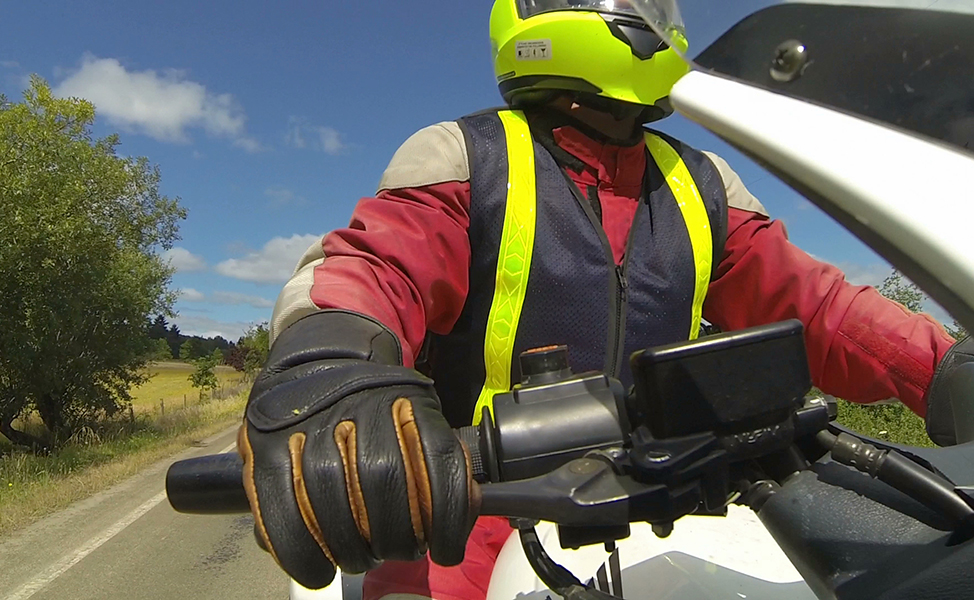Introduction
You are riding in a rural area on a two-lane road. You have been traveling at 55 mph all day but are now stuck behind three cars moving at 35. You are not in a big hurry, but you are annoyed and getting impatient. Finally: a passing zone! There is no oncoming traffic so you signal, check your mirror and blind spot, pull out to pass and accelerate.
As you come alongside the row of cars, your eye catches a turn signal flashing and you suddenly realize there’s a driveway coming up on the left. Your heart drops into your stomach, and you watch in slow motion as the lead car turns left in front of you.


The Wrong Response
At this point, it is usually too late to avoid a collision. (See “The Reality” below for strategies to avoid this type of situation altogether.) Some riders attempt to slow down, but they are rarely successful because they ignore the front brake, stomp on the rear brake, lay the bike down and slide into — or underneath — the turning car.
Don’t:
- Underuse the front brake
- Overuse the rear brake
- Lay the bike down
The Better Response
Again, it’s probably too late to avoid a collision, but you may be able to lessen the impact. The better response is to immediately apply maximum straight-line braking, using both brakes simultaneously, to get your speed down. Remember, in an emergency, 75 percent or more of your stopping power comes from the front brake. Do not lock either wheel or lay the bike down.
Do:
- Apply maximum braking
- Use both brakes
- Keep the bike upright

The Reality
Oregon riders are killed and injured every year falling into this trap. Unfortunately, once the error has been made, there’s rarely an escape. The root causes of this crash are the rider’s lack of visual lead, observational skills and judgment. When you are stuck behind slow-moving, two-lane traffic, instead of rushing an impatient overtake of multiple vehicles in a row, ask yourself why traffic is moving so slowly.
Even when visibility is good, driveways and farm-field entrances are easily hidden. Beginners and experienced riders alike miss the clues that warn them what’s ahead — a break in the trees, a telltale mailbox. Look as far up the road as you can for likely turnouts. Overtake slower vehicles one at a time.
In rural areas, slow-moving traffic will rarely hold you up very long — it’s often a local resident traveling a short distance. Remember, riding a motorcycle is about the journey and not the destination: take your time, enjoy the ride, and don’t ever, ever hurry.
Best strategy
- Look well ahead: 10 to 20 seconds
- Assume there is an upcoming turnout
- Be patient
If the concepts of maximum braking or a visual lead are unfamiliar to you, or if you are prone to judgment errors like these, Team Oregon recommends you seek help: Enroll in a training course and get some instruction and practice in these critical skills.